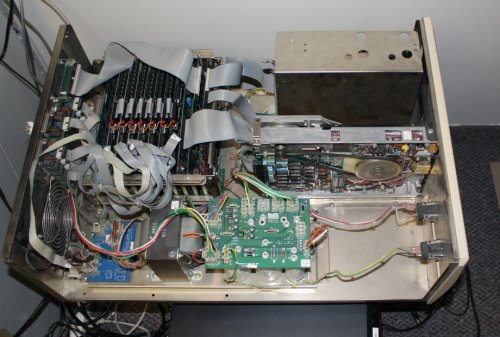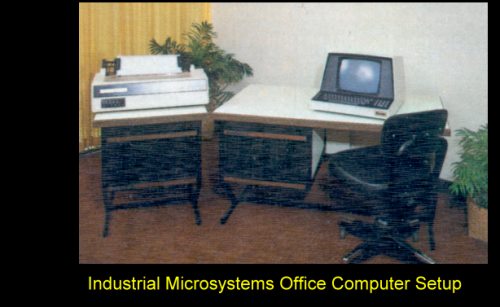Industrial Micro Systems -
History
This was a relatively late comer into
the S-100 Bus boards arena. From their name it was clear that they targeted the
industrial based market rather than the home/hobbyist community. The
actually manufactured a wide range of S-100 boards.
Al Fiegehen and Don Lehr founded Industrial Micro Systems in Southern
California in the late 1970’s. They engineered and manufactured a socketed
8K S-100 bus static ram board (C00232). The boards underwent rigorous
in-house testing prior to shipment and proved to be highly reliable. They
soon
(1978)
produced a second 16K static ram board (C00282) which rapidly became
an industry standard for S-100 static ram memory. By 1979 the company had
developed a complete line of Z80 S-100 boards and began selling a turnkey
CPM based computer system. These computers had an I/O board (model 440) with
a power-on IPL boot ROM which eliminated the need for a front panel
switchboard. The computers also had a tape backup using an Alloy DS-100 tape
controller.
Soon after this the company moved their facilities to Carson City, NV to
take advantage of both favorable economics and commercial land.
In 1981
the company introduced its Series 5000 (w/5.25” floppy drives) and the
Series 8000 (w/8” floppy drives) computers. They were S-100 bus, CPM
2.2 based systems which had a robust linear power supply and a nickel plated
steel chassis. The company also changed its name to “IMS International” and
expanded its sales into the European market.
In 1982 the company introduced a S-100 bus multi-user Z80 slave board
(A862, MPU) and began selling master/slave multi-user systems packaged with
Software 2000’s TurboDos operating software. In 1983 IMS engineered
one of the first S-100 switching power supplies or “switchers” for their
Series 5000 computer.
In 1985 the company once again changed its name to L/F Technologies and
introduced its S100+ line of master/slave board systems. Both a Z80B (A1270)
and a 80186 (A1230) CPU master board, as well as several 80186
(A1240 and A1510) slave boards along with a Z80H (A1320) slave board
were available for this computer. The new systems utilized an above board 26
conductor parallel data cable to communicate between the master and the
slaves, making it unique among the other S-100 master/slave multi-user
computers on the market.
Then in 1987 the company introduced an 80286 Unix based multi-user
system. This computer had no S-100 bus architecture and came in a cube
shaped case. The company again changed its name to Cubix Corp., a name that
has lasted to the present day. After the introduction of the Unix based
system the company began phasing out its S-100 product line
It should be noted here that in 1988 Cubix bought out InterContinental Micro
Systems (aka MuSys) which was a Los Angeles based competitor that produced a
similar line of S-100 master/slave boards. However, Cubix was not interested
in InterContinentals S-100 products,
but rather wanted to obtain ICM’s QuickLink board technology, which turned
IBM XT/AT type computers into multi-user systems.
The company is
still in business, now producing blade servers. See
http://www.cubix.com.
In the early 1980's IMS were well known as the suppliers a complete word
processing, data processing office setup system complete with a removable platter 16MG
hard disk storage system. There were two systems, both systems contained a 12 slot S-100 motherboard.
One unique aspect of the later IMS systems was that peripherals were handled
using an array of "Personality" boards that attached to the parallel and
serial ports of the cards. There were hard disk and floppy disk
"Personality" boards as well as RS232, modems, and a RTC board.
Documentation about this can be seen
here.
A good summary of the S-100 boards that make up the IMS 5000 series can be
seen
here.



